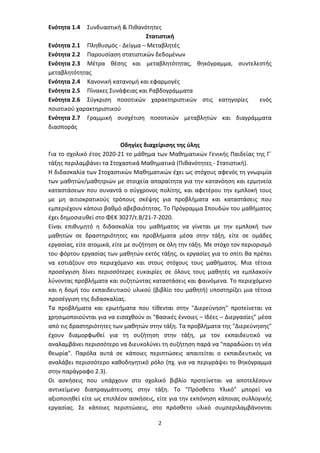Femicide: Examining The Factors Behind The Growing Number Of Cases

Table of Contents
Societal Norms and Gender Inequality
Deep-rooted societal norms and pervasive gender inequality form the bedrock upon which femicide thrives. These are not isolated incidents but the tragic consequences of a system that undervalues and dehumanizes women.
Patriarchal Structures:
Patriarchal structures, where men hold primary power and authority, create environments conducive to violence against women. This manifests in several ways:
- Control over women's bodies: Laws and societal expectations often restrict women's reproductive rights and bodily autonomy, reinforcing their subordinate status.
- Limited economic opportunities: Gender pay gaps and limited access to education and employment leave many women financially dependent on men, increasing their vulnerability to abuse.
- Restrictive social roles: Traditional gender roles that confine women to the domestic sphere limit their independence and social mobility, making them more isolated and less likely to seek help.
These inequalities are starkly illustrated by statistics showing women's underrepresentation in leadership positions, lower educational attainment in certain regions, and limited access to financial resources. The very structure of these societies, which privilege men and subordinate women, directly increases the risk of femicide.
Gender Stereotypes and Misogyny:
Harmful gender stereotypes and rampant misogyny further normalize and fuel violence against women. These attitudes often portray women as objects, property, or provocateurs, justifying violence against them.
- Women as property: The notion that women belong to men, either through marriage or other forms of control, creates a sense of ownership that can lead to extreme violence.
- Women provoking violence: The dangerous myth that women's behavior can trigger violence shifts the blame from the perpetrator to the victim.
- The role of misogynistic ideologies: Online spaces, for example, often harbor extremist groups and ideologies promoting hatred and violence against women, creating a toxic breeding ground for femicide.
These deeply entrenched attitudes contribute both directly – through inciting violence – and indirectly – by creating an environment where violence is tolerated and excused.
Lack of Legal Protection and Enforcement
Even when violence occurs, insufficient legal protection and weak enforcement mechanisms often leave perpetrators unpunished, perpetuating a cycle of violence leading to femicide.
Weak Legal Frameworks:
Many regions lack robust laws and policies to protect women from violence. This includes:
- Lack of domestic violence laws: In some countries, there are no specific laws addressing domestic violence, leaving women with little legal recourse.
- Inadequate protection orders: Even where protection orders exist, they are often poorly enforced, failing to protect women from their abusers.
These legal loopholes create a climate of impunity for perpetrators, emboldening them to escalate their violence.
Ineffective Law Enforcement and Judicial Systems:
Even with strong laws, ineffective law enforcement and judicial systems can hinder the prosecution of femicide cases. This often stems from:
- Corruption and bias: Corruption within law enforcement and judicial systems can lead to cases being mishandled or dismissed, protecting perpetrators.
- Lack of resources: Under-resourced police forces and overburdened courts often lack the capacity to effectively investigate and prosecute femicide cases.
- Victim-blaming: The pervasive practice of victim-blaming during investigations and trials further undermines the pursuit of justice and discourages reporting.
These systemic failures contribute significantly to the underreporting and under-prosecution of femicide, allowing perpetrators to escape accountability.
Access to Resources and Support Systems
The lack of accessible resources and support systems for women experiencing violence exacerbates their vulnerability and increases the risk of femicide.
Limited Access to Shelters and Support Services:
Many women lack access to essential services such as:
- Shelters: A shortage of safe shelters and transitional housing options leaves women with few options to escape abusive situations.
- Counseling and support services: Limited access to counseling, legal aid, and other support services further isolates women and hinders their ability to seek help.
The fear of retaliation, social stigma, and a lack of awareness about available resources prevent many women from seeking help, leaving them trapped in dangerous situations.
Economic Dependence and Power Imbalances:
A woman's financial dependence on her partner dramatically increases her vulnerability to violence.
- Economic inequality: The significant economic disparity between men and women leaves many women reliant on their partners for financial support.
- Financial control: Abusers often exert control over their partner's finances, restricting their ability to leave the relationship.
This economic dependence limits a woman's options and ability to escape abusive relationships, putting her at a significantly higher risk of femicide.
Conclusion:
The rising number of femicide cases is a stark reminder of the pervasive gender inequality and societal norms that normalize violence against women. Combating femicide requires a multi-pronged approach addressing weak legal frameworks, ineffective law enforcement, limited access to resources, and deeply ingrained patriarchal structures. Strengthening legal protections, improving law enforcement training, increasing access to shelters and support services, and challenging harmful gender stereotypes are critical steps in preventing femicide. We must all work together to create a world where women are safe, valued, and free from violence. Learn more about organizations dedicated to ending violence against women and how you can contribute to preventing femicide. Let's collectively challenge the societal norms that allow femicide to flourish and work towards a future where every woman can live free from fear.

Featured Posts
-
 Lynontas To Tampoy Nea Endeikseis Gia Aneksixniastoys Fonoys
May 20, 2025
Lynontas To Tampoy Nea Endeikseis Gia Aneksixniastoys Fonoys
May 20, 2025 -
 Restrictions Des 2 Et 3 Roues Sur Le Boulevard Fhb Debut Le 15 Avril
May 20, 2025
Restrictions Des 2 Et 3 Roues Sur Le Boulevard Fhb Debut Le 15 Avril
May 20, 2025 -
 Federal Investigation Millions Stolen Via Executive Office365 Compromise
May 20, 2025
Federal Investigation Millions Stolen Via Executive Office365 Compromise
May 20, 2025 -
 Market Volatility Deciphering The D Wave Quantum Qbts Stock Crash
May 20, 2025
Market Volatility Deciphering The D Wave Quantum Qbts Stock Crash
May 20, 2025 -
 Trump Tariffs Gretzkys Loyalty And Canadas Statehood Debate A Complex Issue
May 20, 2025
Trump Tariffs Gretzkys Loyalty And Canadas Statehood Debate A Complex Issue
May 20, 2025
